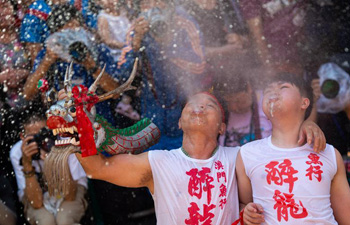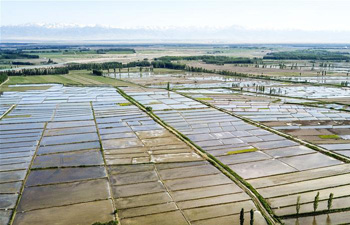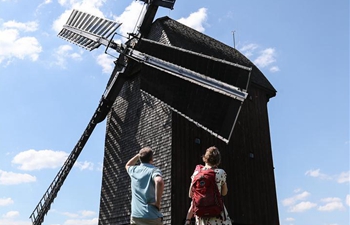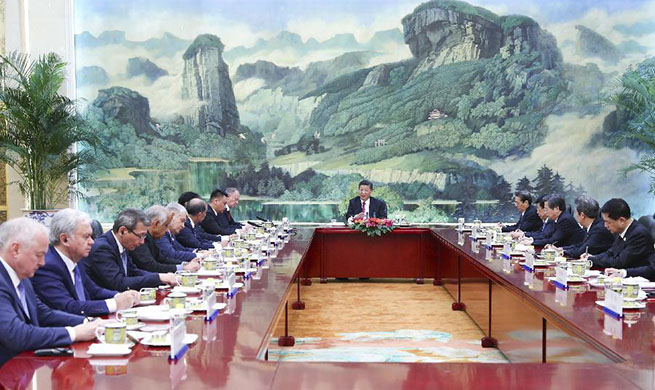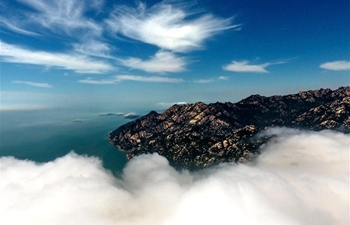XINING, May 22 (Xinhua) -- On Mt. Gangshika, 4,000 meters above sea level, Zhang Fade's horses leave behind a trail in the snow.
The snow-covered Mt. Gangshika, in Menyuan County of northwest China's Qinghai Province, hosts sports competitions all year round, including mountaineering and skiing.
Last week, an international mountaineering competition was held there, drawing 42 contestants from around the world, as well as many spectators.
Zhang helps bring all kinds of materials up the mountain for competitors and visitors. For each round trip up and down the mountain, he makes about 400 yuan (63 U.S. dollars).
"Business is quite good," he said.
Like many locals, Zhang has also opened a homestay, providing visitors food and accommodation.
Tourism is thriving in China. The country's domestic tourism industry brought in 4.57 trillion yuan with 5 billion domestic trips made in 2017, up
15.9 percent and 12.8 percent, respectively, data from the China National Tourism Administration showed. Growing tourism business has generated great opportunities for people like Zhang.
A similar situation can be found in Zhaxizom Township in southwest China's Tibet Autonomous Region. The township is close to Mt. Everest, or Mt. Qomolangma as it is known locally.
Sonam, 46, owns a homestay in the township's Pasum Village. Through the windows of her house, the world's tallest mountain appears in a majestic vista.
"You can see the sunrises and sunsets over Mt. Everest from my house," she wrote in an advertisement for her homestay.
"In the past, whenever tourists came for Mt. Everest, they would ask me if I could offer accommodation, so I opened the homestay in 2007," Sonam said. Business was so good that she had to build two more floors on the old homestay, which can host more than 40 guests at a time.
"The peak season starts in April and ends in October," she said. Last year, the homestay business brought her more than 200,000 yuan in revenue.
Local officials have come up with a plan to help locals enjoy the benefits of tourism in the township's 30 villages. Some villages will provide yaks to carry materials for tourists, and some will offer accommodation, according to Dawa, deputy Secretary of the Township Committee of the Communist Party of China.
"The Mt. Qomolangma National Park receives about 120,000 visitors a year," Dawa said. "The tourism industry has truly benefited local people here."





